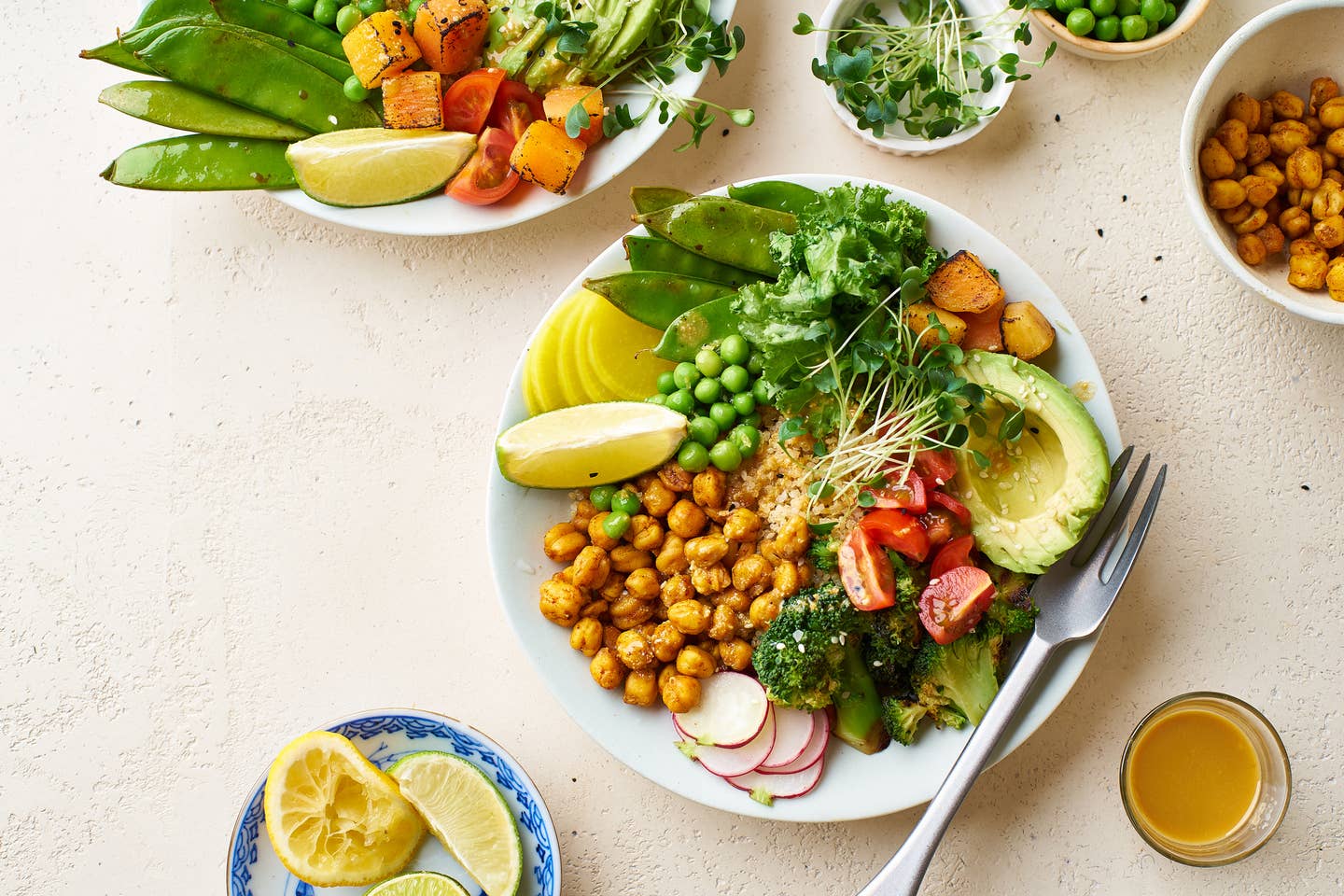
The Healthiest Way to Eat Keto, From a Nutritionist
You may think that the ketogenic diet and a plant-based lifestyle are at odds: After all, many popular keto recipes online involve processed meat and loads of dairy such as cheese or sour cream. As it turns out, there is a way to approach the keto diet without eating animal products. Below, nutritionist Natalie Rizzo, New York-based Registered Dietician, and advisor to The Beet, weighs in.
Q: How can I be plant-based and keto and still get enough nutrients but not too many carbs? Can you please explain how net carbs work?
A: The keto diet is a high-fat diet that many people use successfully for weight loss. For most dieters, it includes eating a large amount of red meat, butter, and oils to achieve the necessary high-fat and low-carb mix that puts the body into ketosis. But for plant-based eaters, following a keto diet can be a little bit tricky, but still possible. It's a much healthier choice since you don't cut out an entire food group, of vegetables, that are high in antioxidants and nutrient-dense, and a healthier approach, especially when it comes to your heart and building up your immune system. Before delving into how to make keto work for you on a plant-based diet, let’s take a look at the facts about the keto diet.
Is a ketogenic diet good for you?
People following the keto diet are trying to force their bodies to burn fat. They eat 70 to 80 percent of calories from fat, 15 to 20 percent from protein, and 5 to 10 percent from carbs. For someone on a 2,000 calorie diet, that’s about 25 to 50 grams of carbs per day.
Many people jump on the keto diet train because they believe it might help them lose weight. One study found that obese men who followed a keto diet for weeks felt less hungry overall, which may play a significant role in the ability to lose weight. Another review of the research backs up this claim that a ketogenic diet may suppress appetite.
That said, the keto diet is highly restrictive, making it difficult to follow long-term. And the keto diet is not all that well-balanced. For example, fruits, vegetables, beans, and legumes are rich in carbs, which means you need to limit your intake of these healthy foods that are full of fiber, phytonutrients, and antioxidants (all great for you) on the keto diet. Plus, there is a multitude of other not-so-pretty side effects.
Those who transition to a keto diet tend to experience the "keto flu," a combination of nausea, fatigue, headaches, and just overall feelings of crappiness, a nasty side effect of carb withdrawal. A buildup of ketones (which are released in the kidneys as fat gets burned for fuel) creates acetone in the body, which can cause bad breath and more unhealthy side effects. One recent study found that rats in the lab showed signs of heart scarring after months on a keto diet. Not to mention that fiber intake is limited, so you might become constipated.
While I don’t recommend the keto diet, if you insist this is the way you want to go, there are ways to follow it as healthily as possible. Here are some things to consider.
Net carbs
Many keto eaters aim to get less than 20 grams of net carbs per day. Net carbs are the carbohydrates in food minus fiber and any sugar alcohols (that don't add to your carbs). For example, a ½ cup of chickpeas has 19 grams of carbs, 4 grams of fiber, and nets out at 15 grams of net carbs.
This means that any complex carb-containing foods like vegetables that have more fiber end up being lower in net carbs. To get the highest variety of healthy produce in your keto-friendly diet, choose from these fruits and vegetables that are lower in net carbs.
- Spaghetti Squash (1 cup): 8g net carbs
- Avocado (1 whole fruit): 4g net carbs
- Broccoli (1 cup florets): 4g net carbs
- Zucchini (1 cup): 3g net carbs
- Cauliflower (1 cup florets): 3g net carbs
- Tomato (1 fruit): 3 g net carbs
- Asparagus (1 cup): 2 g net carbs
- Spinach (1 cup): 1g net carbs
- Celery (1 cup chopped): 1g net carbs
Healthy fats
The base of any keto diet is fat, but luckily plant-based fats are usually the “good” kind. Fat from oils, nuts, seeds, and avocados are unsaturated fats, which have been shown to raise beneficial HDL cholesterol levels. On a keto diet, the majority of your diet (70-80%) will come from fat. That means loading up on nuts and seeds and drizzling olive oil on most foods.
Be mindful of your saturated fat intake though. Saturated fat is mostly found in animal products, but it’s also the main source of fat in coconut. Therefore, coconut-based cheese, yogurt, or milk should be more of a once-in-a-while treat, rather than a daily item.
Low-carb proteins
Plant-based proteins pose a tricky problem for a keto eater. Beans and legumes are rich in carbs, making them frowned upon on the keto diet. For that reason, your go-to plant-based protein will likely be soy. Three ounces of tofu only has 2 grams of net carbs, while three ounces of tempeh has 6 grams of net carbs. Nuts and seeds also contribute protein, but they are much higher in healthy fats.
Bottom line: If you really want to try a plant-based keto diet, make sure you stick with whole foods. Vary your food intake to make sure you’re getting a variety of vitamins, minerals, and antioxidants. And definitely consult with a health care professional if you have questions.
More From The Beet






